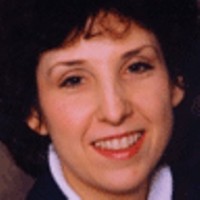Analysts trying to reconcile third-quarter premium jumps reported by line of business for W.R. Berkley Corporation with the CEO’s opening remarks during an earnings conference call this week may well have been confused.
“That bloom is off the rose,” President and Chief Executive Officer W. Robert Berkley Jr. said, referring to prior hard market conditions in the property reinsurance market, and property-catastrophe reinsurance, in particular.
In spite of changing conditions, an analysis of the lines in which the specialty insurer and reinsurer grew most in the quarter shows double-digit jumps for both property reinsurance and short-tail insurance lines, while commercial auto insurance—a line that Berkley said needed plenty of rate—came in nearly flat for the quarter. Net premiums written across all insurance and reinsurance lines grew just 5.5% compared to the third quarter of 2024, down from more than 7% year-over-year for the second quarter and close to 10% in the first quarter.
“That’s just us getting our last bite at the apple before the apple starts to rot,” said Berkley, referring to a nearly 13% third-quarter jump in property reinsurance premiums for his company. “We have a view as to rate adequacy, and we have no problem drawing a line in the sand as we have demonstrated in the past,” he said, looking ahead to the rotten part of the cycle.
“From our perspective, there’s still margin in the business. We’ll see how long that lasts, [but] it’s without a doubt eroding,” he said. “You can feel the growing groundswell… It’s palpable around 1/1,” he said, referring to the growing appetite of reinsurers to write more property business during Jan. 1, 2026 renewals.
An analyst later came back to the rotting apple analogy, noting that there continues to be “rhetoric” in the marketplace that “property is still rate adequate,” pressing the executive to comment on whether profit margins will be competed away during upcoming reinsurance renewals.
“It depends on what the feeding frenzy is like at 1/1,” Berkley said. “Everyone needs to assess how much margin they think is in the business,” he said, recalling the dramatic upward shifts in rates and attachment points two years ago and the more recent softening. “It’s likely there will be further softening at 1/1… We’ll have to see how aggressive the market is. We have a view as to how much margin is in the business and at what point we shift our posture from an offensive one to a defensive one.”
“That’s just the reality of a cyclical business.”
Commenting more generally on the market overall, Berkley said, “The past 90 days is just a continuation of clear evidence that the insurance industry is still a cyclical industry… The industry continues to seemingly make an art out of self-sabotage when it comes to its own success.”
W.R. Berkley reported continued success from its underwriting activities, with combined ratios of around 91 for the third quarter and first nine months nearly unchanged from the same periods in 2024. The CEO noted that the specialty company is somewhat insulated from the competitive dynamics because of its focus on small specialty accounts.
On the insurance side of the business, he said, “Larger equals more competition. Smaller equals less competition.” And on the property insurance front, in particular, competition for shared-and-layered business and for E&S property has seen more competition in the third quarter.
As was the case on the reinsurance side, analysts lining up that commentary with Berkley’s premium growth figures would like premiums for short-tail insurance lines to shrink rather than to grow by almost 12%. Berkley explained that “the small admitted space, as well as select parts of the homeowners market, continue to offer attractive opportunity.”
In particular, he later highlighted Berkley’s private client personal lines business known as Berkley One as one business presenting great opportunity. “We continue to lean into that,” he said, also noting that another short-tail non-property line—accident and health business—continues to flourish.
At a later point during the conference call, during the question-and-answer period, Berkley noted that Berkley One—now a $0.5 billion business—does not participate in the California personal lines market.
While W.R. Berkley’s net premiums grew in every line of business in the third quarter, the company showed the least growth in commercial auto. Hard market conditions in that line are “on again and off again,” CEO Berkley said, noting that he was more optimistic about conditions earlier this year than he is now. “It’s a bit of a puzzle to me…because there is no product line that has been more exposed to social inflation in our opinion than auto,” he said. “We are reducing exposure. We’re taking a lot of rate. And quite frankly, our top line is growing considerably less than our rate,” he said.
Asked for specifics on price hikes vs. exposure reductions, Berkley said that while he did not have the details readily available, “I wouldn’t have made the comment I made earlier if it was just rounding. It’s meaningful…”
“There are some market participants, particularly those with delegated authority, that don’t seem to get where loss costs are. But that will end in tears eventually, and [then] we will have an opportunity,” he said.
Another line that Berkley continues to be wary of is workers compensation. Here, Berkley stressed that the growth in net premiums on his company’s books relates to high-hazard specialty rather than Main Street comp business.
Too Cautious Too Early?
Excluding the workers comp line, W.R. Berkley took 7.6 points of rate in the quarter, Berkley said. “This is an organization that is focused on rate adequacy. And to that end, we are very attuned to the fact that we are in business to make good risk-adjusted returns, not solely to issue insurance policies,” he stressed.
Analysts repeatedly reminded Berkley that he had previously signaled a premium-growth environment in the 8-12% range, trying to pin him down to some numbers for the rest of the year.
“We have major parts of the marketplace that are in some period of transition. Some are eroding and will likely erode further. Some are healthy, and others are somewhere between the bookends, perhaps going through some stage of fits and starts… It’s these periods of transition, which makes it really, really hard to predict what the opportunity will be over the next 90 days,” he said in response to one questioner.
“I do believe that there’s still opportunity for us to grow, and grow at a healthy rate from here. But…we are not going to compromise our underwriting and particularly rate integrity in order to juice the top line… That’s because we have a sense of ownership, obligation and responsibility to the capital we manage.
“We get rewarded [and] our colleagues throughout the organization get rewarded, not just monetarily but emotionally based on delivering good risk-adjusted returns coming out of the underwriting,…as opposed to an MGU where…it’s just about how many widgets you can roll off the assembly line today.”
Addressing a second analyst who specifically asked if mid-single-digit growth is more likely in the cards going forward, Berkley said, “It could very well be the case…You’ve got a lot of pieces of the broader marketplace that are in some kind of flux, and we are going to respond to that. So, is it possible that next quarter we could grow 4 percent? Yes. Is it possible next quarter we could grow 10%? Yes, absolutely,” he said, noting that insurance and reinsurance markets in flux prevent him from offering a number with a high level of confidence.
Another analyst posed a more philosophical question, reminding Berkley that his father, Executive Chairman William R. Berkley, has said in the past that pulling back too early during a prior hard market was one of his biggest regrets. “Is that a debate that’s going on right now?” the analyst wondered.
“I recall that comment from the chairman usually about 7:45 every morning, at least five days a week,” said the younger Berkley, referring to a “genetic flaw” to exercise caution during market cycles and yielding the floor to his father to respond.
Chairman Berkley said there are still some market opportunities in the current market after he listed the questions that insurance leaders must ask themselves as markets start changing: “Are prices going to go down more? Are they at the bottom? How much margin do you have? And where is the current accident year going to come out?”
“In 1986, we had much more margin than we were reporting. We didn’t realize it and we cut back too soon,” he said, noting that insurers may be overly pessimistic about their margins if they don’t appropriately reflect the substantial price increases of the hard market in accident year results.
Where prices change, you have to figure out “what’s happening with the loss ratio,” the chairman said.
Suggesting a degree of pessimism may, in fact, be warranted today, Chairman Berkley said there is more litigation today than there was in 1986. “There are more lawyers who are incentivized to bring about litigation.”
Still, he believes there are some remaining opportunities to grow. “You don’t have to run away at this moment. But it will come at some point in time. We guess it’s not here quite yet, but it is going to evolve to that point,” he said, speculating that the softer market may be of shorter duration this time around.
At various points during the call, CEO Berkley said that the company was “pivoting” in its largest insurance line of business—other liability—offering state and attachment point among the variables that produced a single-digit growth rate for that line in the quarter.
“It’s not that we abandon a market. It’s that our appetite and how we’re willing to approach it can adjust based on the data and the information that we see,” he said, explaining that rather than W.R. Berkley exiting a market, “the market may move away” as the company raises rates or changes terms and attachment points. “We rely on our colleagues with the expertise in various niches to decide how and when to pivot,” he said.
AI generated image (Adobe/Firefly)
Topics Property
Was this article valuable?
Here are more articles you may enjoy.





 Former CEO of Nonprofit P/C Statistical Agent Sentenced for Stealing Millions
Former CEO of Nonprofit P/C Statistical Agent Sentenced for Stealing Millions  More US Beef Plants May Close as Cattle Herds Keep Tightening
More US Beef Plants May Close as Cattle Herds Keep Tightening  CEO Sentenced in Miami to 15 Years in One of the Largest Health Care Fraud Cases
CEO Sentenced in Miami to 15 Years in One of the Largest Health Care Fraud Cases  ‘Door Knocker’ Roofers Were Everywhere. NC Farm Bureau Saw an Opportunity
‘Door Knocker’ Roofers Were Everywhere. NC Farm Bureau Saw an Opportunity 


